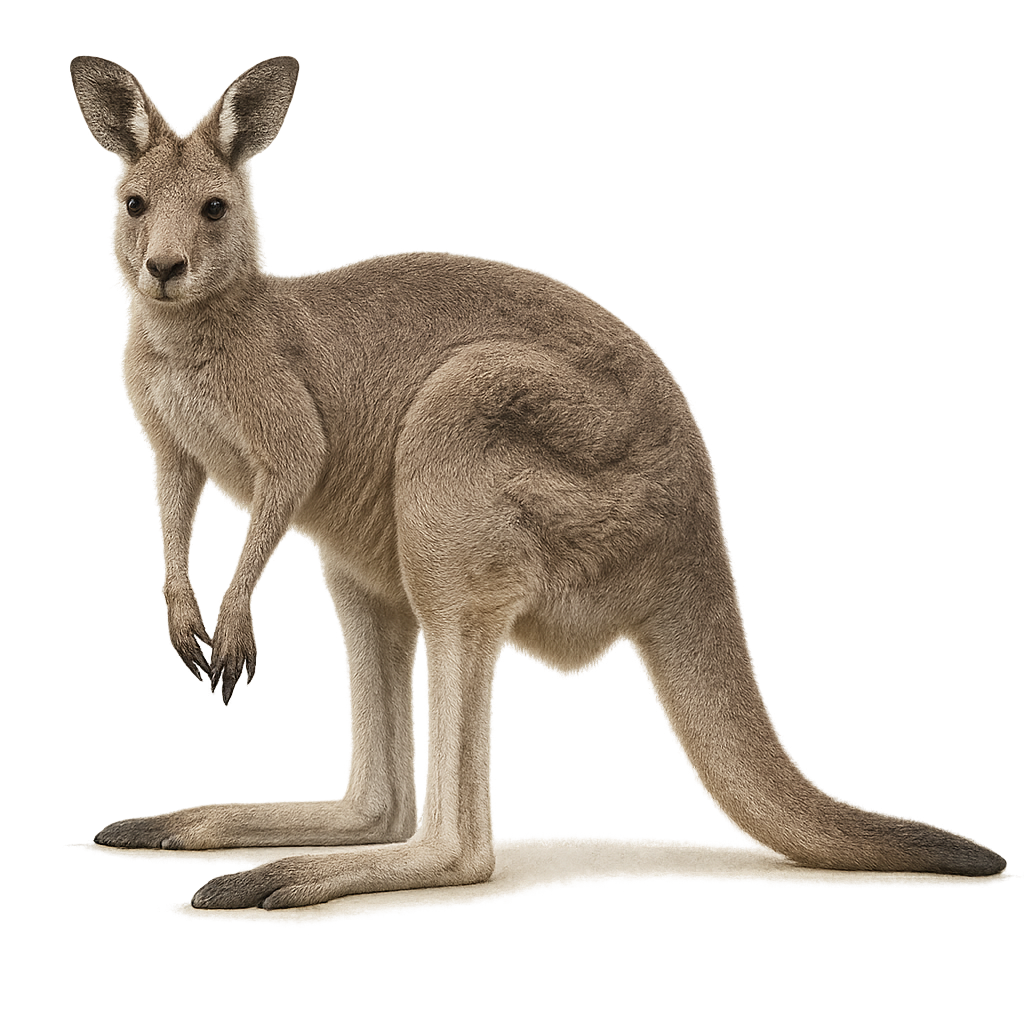Your wildlife photography guide.
Explore the eastern grey kangaroo in detail, study its behavior, prepare your shots.
Where to observe and photograph the eastern grey kangaroo in the wild
Learn where and when to spot the eastern grey kangaroo in the wild, how to identify the species based on distinctive features, and what natural environments it inhabits. The WildlifePhotographer app offers tailored photography tips that reflect the eastern grey kangaroo’s behavior, helping you capture better wildlife images. Explore the full species profile for key information including description, habitat, active periods, and approach techniques.
Eastern Grey Kangaroo
Scientific name: Macropus giganteus

IUCN Status: Least Concern
Family: MACROPODIDAE
Group: Mammals
Sensitivity to human approach: Suspicious
Minimum approach distance: 10 m
Rut period: December to January
Gestation: 36-38 jours
Births: January to February
Habitat:
Forests, grasslands, savannas
Activity period :
Mainly active at night, generally discreet during the day.
Identification and description:
The Eastern Grey Kangaroo, or Macropus giganteus, is a prominent marsupial native to Australia, recognized for its large size and unique hopping locomotion. It has a grey-brown coat with a lighter belly. Males can reach up to 2 meters in height and weigh around 66 kg, while females are generally smaller. These kangaroos live in groups known as "mobs" and are primarily herbivorous, feeding on grasses and leaves. They possess powerful hind legs and a muscular tail used for balance. Although they are mostly active at dusk and dawn, they can also be seen during the day.
Recommended lens:
400 mm – adjust based on distance, desired framing (portrait or habitat), and approach conditions.
Photography tips:
To photograph the Eastern Grey Kangaroo, aim for the golden hours of morning or evening to take advantage of soft, flattering light. Use a telephoto lens of at least 400mm to capture detailed images from a distance without disturbing the animal. Be patient and observe their behavior to anticipate their movements. A tripod can be useful to stabilize your camera, especially in low light conditions. Remember to respect the 10 m safety distance to avoid stressing the animals and to achieve natural shots.
The WildlifePhotographer App is coming soon!
Be the first to explore the best nature spots, track rutting seasons, log your observations, and observe more wildlife.
Already 1 429 wildlife lovers subscribed worldwide

